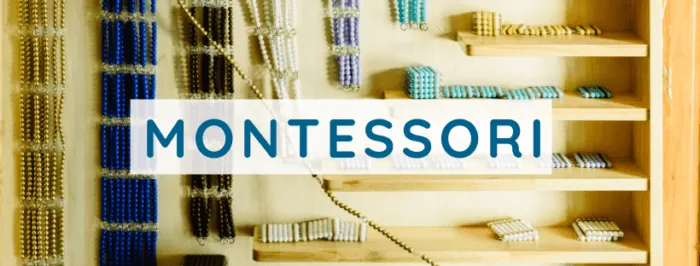Compound Words for Kids – Activity for Preschoolers
Creating original materials was one of my favorite parts of Montessori training. One material I created is within the Blue Series and involves one of my favorite concepts – Compound …
This content provides an overview of the Montessori method including the Montessori sequence of lessons and lessons for the Montessori areas of the classroom.

Lesson areas include Practical Life, Sensorial, Math, Language, Geography, History, Art, & Peace.
The Montessori term encompasses domestic work to maintain the home and classroom environment; self-care and personal hygiene; and grace and courtesy. Practical life skills are of great interest to young children and form the basis of later abstract learning.
It is necessary to begin the education of the senses in the formative period if we wish to perfect this sense development with the education which is to follow.
The education of the senses should be begun methodically in infancy and should continue during the entire period of instruction which is to prepare the individual for life in society.
Dr. Montessori believed that the brain is naturally drawn to precision, organize, compare, create order out of disorder, classifying and quantifying patterns and relationships.
The way Montessori approaches math begins early on in a child’s life. Dr. Montessori believed that human beings are born with a propensity to naturally be driven to calculate, reason, and create within their environments.
Maria Montessori believed strongly (and scientific research backs up this belief) that a child is born with what he needs to develop language.
With that said, there are many ways adults can enrich a young child’s language development, especially by preparing the environment ripe for language learning.
There are two main geography pieces within the Montessori Early Childhood classroom: physical geography & political geography (also known as culture).
Begin with physical and then introduce political.
Montessori History lessons for kids emphasize duration and passage of time works. For example, telling time is part of Montessori’s history area.
Time is such an abstract, non-tangible idea even to us adults. Imagine what it is like for children who developmentally cannot even comprehend a second versus a decade.
Montessori history speaks to the duration and passage of time in the early childhood classroom.
Although there is no specific Montessori writing on art in a Montessori classroom, we can only imagine the appreciation Dr. Montessori must have had for this approach to learning.
Her emphasis on order, neatness, and love of nature gives further indication that she would support artworks within a Montessori classroom. The focus is on the process and not the product.
Creating original materials was one of my favorite parts of Montessori training. One material I created is within the Blue Series and involves one of my favorite concepts – Compound …
Fall is in the air, and that means it’s pumpkin time! This fun paper plate craft is a great way to teach kids about the life cycle of a pumpkin. …
Mountains offer a stunning backdrop for family adventures, blending physical activity, nature exploration, and unforgettable memories. Whether you’re hiking, camping, or simply soaking in the views, introducing kids to the …
In the world of Montessori education, hands-on learning is a cornerstone of nurturing young minds. One of the most fascinating and enriching materials used in this educational approach is the …
So, as a Montessori teacher, I bet that you’re thinking about revamping your Fall Practical Life shelves for this coming school year. How can you make your shelves interesting to …
My six-year-old is in his sensitive period for grammar. I looked around our home and decided to create Montessori Preposition Cards based on what was in my boys’ environment. This …